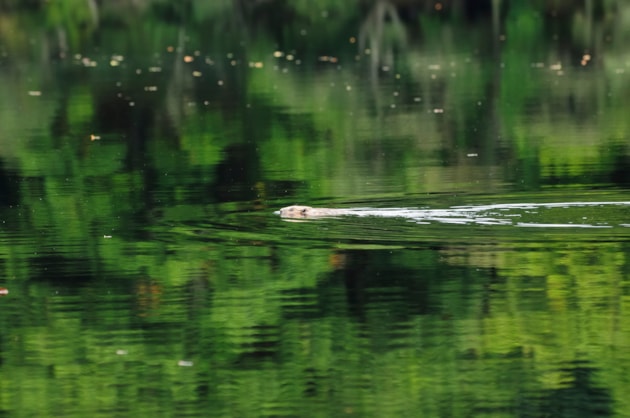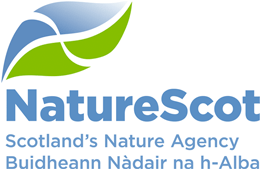13 February, 2025
Making space for beavers could help woodland creation

Careful design could help new woodlands thrive in areas where beavers are present, according to a new report.
With ambitious woodland expansion targets in Scotland and a growing beaver population, the overlap between beaver territories and woodland creation schemes is expected to become more common.
The research by NatureScot and the Beaver Trust draws on international expertise, as well as case studies in Scotland, to make recommendations for how to establish resilient new woodlands in areas where beavers live.
Beavers typically forage within 20m of a river or loch shore and are known to be choosy eaters with a preference for certain species, including willow, aspen, hazel, birch and rowan.
Many of these native tree species are well-adapted to survive occasional flooding and are also likely to resprout after beaver browsing.
The report recommends that, when designing new woodlands along rivers and lochs, encouraging these fast-growing species within 20m of the watercourse by planting or natural regeneration could help provide enough food for beavers while minimising impacts on the rest of the woodland.
Similar strategies have been shown to be effective in the Czech Republic, North America and the Danube River Basin.
NatureScot beaver lead, Dr Jenny Bryce, said: “Expanding our riverside woodlands and restoring beavers are both important priorities in tackling the nature loss and climate change crises.
“Woodlands along our rivers and lochs are hotspots of biodiversity, providing vital habitats and cooling shade and nutrients for our rivers, but recent research by NatureScot found that only 19% of riverbanks in Scotland are wooded.
“Beavers are nature’s engineers, helping to restore rivers and wetlands with benefits for many other species. However, beavers can affect existing and establishing riverside woodlands through browsing on trees and shrubs and through flooding.
“While there is more work to be done, we hope the useful guidance in this report will ensure newly created woodland can coexist with beavers, to the benefit of both.”
Dr Kelsey Wilson, lead author, on behalf of Beaver Trust, said: “Beavers play a crucial role in maintaining and enhancing natural woodland ecosystems through their unique ecological engineering.
“Their selective tree-felling opens the canopy, boosting understorey growth and supporting a greater diversity of plants, while the woody debris created by beaver foraging provides vital habitats for up to 40% of woodland wildlife, which depend on deadwood at some point in their life cycle.
“This report is a first step in understanding how we can design and manage riverside woodlands to thrive alongside beavers, rather than exclude them. The goal is to create adaptable woodlands that integrate beaver activity as a natural process, while still achieving Scotland’s planting targets.”
Linsey Mason-McLean, Scottish Forestry’s Land Use and Environment Policy Advisor, said: “With a growing beaver population, interaction between existing and new riparian woodlands will occur more often. We will continue to work closely with NatureScot to address the ongoing challenges to protect these important woodlands and seek to develop riparian habitats that can sustain beaver presence.
“Scottish Forestry has been proactive in encouraging more riparian planting in Scotland. Since July 2023, a new enhancement to the Forestry Grant Scheme provides increased funding rates for planting woodlands within riparian target areas where multiple benefits can be achieved.”
ENDS
Contact information
- Name
- NatureScot Media
- Telephone
- 0131 316 2655
- media@nature.scot
NatureScot is Scotland's nature agency. We work to enhance our natural environment in Scotland and inspire everyone to care more about it. Our priority is a nature-rich future for Scotland and an effective response to the climate emergency. For more information, visit our website at www.nature.scot or follow us on X at https://x.com/NatureScot
’S e NatureScot buidheann nàdair na h-Alba. Bidh sinn a’ neartachadh àrainneachd na h-Alba agus a’ brosnachadh dhaoine gu barrachd suim a chur ann an nàdar. Tha e mar phrìomhachas againn gum bi nàdar na h-Alba beairteach agus gun dèilig sinn gu h-èifeachdach le èiginn na gnàth-shìde. Tha an tuilleadh fiosrachaidh aig www.nature.scot no air X aig https://x.com/NatureScot

